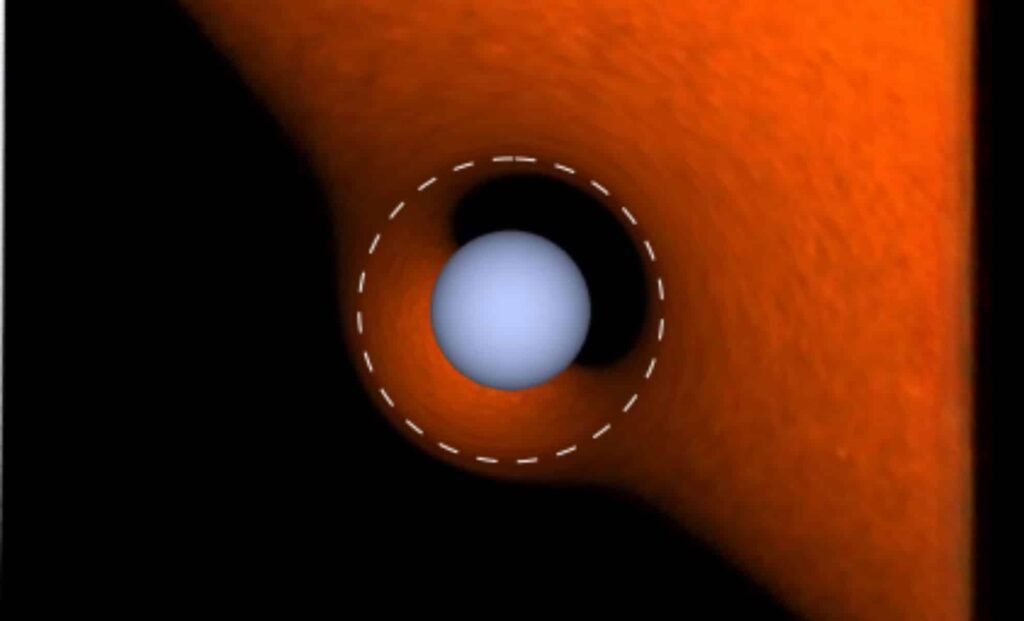The discovery was made by Ethan Kruse, a doctoral student at the University of Washington, while reviewing Kepler data. What he found wasn’t a planet but an unusual pattern of recurring brightenings, a microlensing signal produced by one star magnifying the light of its companion. According to Kruse, this was completely unexpected, even within the professional community: “If everyone’s missed this one, then there could be many more that everyone’s missed as well.” The system’s configuration matched theoretical predictions made in 1973 by André Maeder, who had hypothesized the existence of binaries capable of gravitational lensing.
KOI-3278, situated around 2,600 light-years from Earth, offered a rare opportunity to test Einstein’s general relativity in a stellar context. Instead of a one-time alignment between unrelated stars, the repeated, measurable microlensing pulses in this binary open up new possibilities for precision measurements of stellar mass, orbit, and evolution.
A Magnifying Glass Made of Stars
In this system, a white dwarf and a Sun-like star orbit each other every 88.18 days, with the white dwarf periodically passing in front of its companion. When this happens, the light from the G-type star is briefly magnified rather than blocked, an effect caused by gravitational lensing, which bends and amplifies the light.
As reported by Kruse and Eric Agol in their peer-reviewed study, each magnification event lasts about five hours and causes a subtle brightening of around 0.1% in total light. This was first detected as a repeating pulse train, a hallmark signature of a self-lensing binary.
Eric Agol explained the core mechanism behind the phenomenon: “Gravity curves space and time, so light, on its way to us, is actually bent.” The white dwarf in KOI-3278, with 63% of the Sun’s mass but only Earth’s size, acts as a lens, warping the light of the larger, brighter star behind it.

(using an actual image of the Sun from NASA/SDO HMI), in which the green line shows the
trajectory of the white dwarf, with the dotted portion indicating where it passes behind the G
dwarf. (Left and right) Close-ups of areas boxed in center show the lensed image of the G
dwarf at two different times during the microlensing pulse; the white dwarf is the blue sphere.
The white dashed line shows the Einstein ring of the white dwarf. © arXiv:1404.4379
The Physics behind the Pulse
The system shows remarkably clean and symmetric light curves, alternating between brief brightenings and secondary occultations as the white dwarf moves in and out of view. Both stars orbit each other at a distance of roughly 0.46 AU (about 43 million miles), and the system is seen almost edge-on, maximizing the lensing visibility.
According to the team’s model, the white dwarf’s Einstein radius—the effective radius over which light is bent—is roughly twice its actual physical radius. This alignment makes it possible for the magnification effect to outshine the usual dimming from occultation, a rarity in such systems.
Using a combination of Kepler data and multiband photometry, the scientists derived a white dwarf temperature of around 10,000 K and a mass of 0.634 solar masses. Its companion star is close to solar size and composition, with a temperature of 5,568 K. Based on the data, the binary system is estimated to be about 1.6 billion years old, offering valuable insight into post-common-envelope binary evolution.


A Hidden Population in Kepler’s Archives
The system was initially tagged as a false-positive planet candidate, which led Kruse to analyze it more deeply. It was only through a detailed review of the light curves that the real nature of KOI-3278 emerged. As Kruse emphasized in the NASA report, the accidental nature of the discovery suggests that “there are likely many more self-lensing binaries in the Kepler datasets” that have been misclassified.
John Grunsfeld, former NASA Associate Administrator for the Science Mission Directorate, noted that this finding not only proves long-standing theoretical models but also opens a door to further research into stellar formation and binary dynamics. The white dwarf’s cooling time, combined with the star’s rotational data, hints at past episodes of mass transfer and common-envelope evolution, a process in which one star engulfs the other during its red giant phase.
The precision of the microlensing pulses allows astrophysicists to break degeneracies in white dwarf models, including mass-radius relations, which are difficult to constrain through other means. According to the published study, the system is also “one of the only examples of an eclipsing Sirius-like system”, a binary where a compact object orbits a main-sequence star without strong interaction.
The Light Curve That Changed Everything
This isn’t just a technical achievement, it’s a paradigm shift. KOI-3278 redefines how astronomers can use gravitational lensing beyond galaxies and exoplanets. By capturing regular, predictable signals within a single star system, it provides an astrophysical laboratory for testing relativity, stellar evolution, and binary dynamics in one sweep.
The original microlensing pulses, though barely detectable at first glance, were hiding in plain sight. Now, with the path illuminated, astronomers can comb through existing datasets to uncover similar hidden systems, and rewrite how we understand stellar relationships shaped by gravity.

